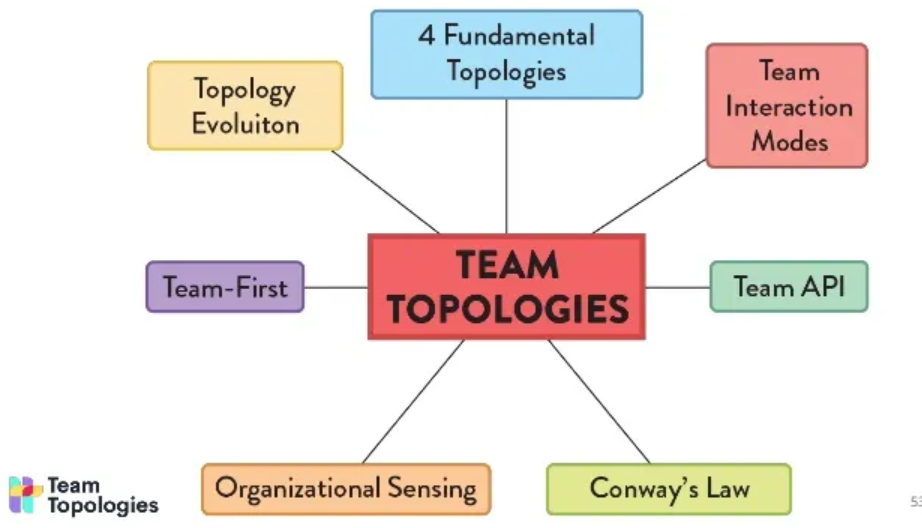Team Topologies: A Blueprint for Effective Team Structures — Part 1
 Arsalan Valoojerdi
Arsalan ValoojerdiTable of contents
- Team First Thinking
- Team First Thinking - Small, Long-Lived Teams as the Standard
- Team First Thinking — Owning the Software: A Team’s Responsibility
- Team First Thinking — Cultivating a Team First Mindset
- Team First Thinking — Embracing Diversity in Teams
- Team First Thinking — Rewarding the Whole Team
- Team First Thinking — Minimizing the Cognitive Load
- Cognitive Load
- Different Types of Cognitive Load
- Managing Team Cognitive Load
- Measure Team Cognitive Load
- Conclusion

In the rapidly evolving and competitive business landscape of today, the significance of constructing team structures efficient cannot be overstated. Inspired by the groundbreaking book “Team Topologies”, this article delves into the concept of Team First Thinking and examines the nuances of different types of Cognitive Load. Additionally, it provides a comprehensive overview of the diverse team topologies featured in the book. By understanding and implementing these principles, organizations can lay a strong foundation for high-performance teams that drive innovation and adaptability.
Team First Thinking
At its core, Team First Thinking is all about designing organizational team structures around the products or services they deliver. Unlike traditional approaches, where teams are confined within functional boundaries, this approach emphasizes building teams that are directly responsible for delivering specific products or services. The ultimate goal is to create a culture of collaboration and shared responsibility, where teams are driven by a common purpose — delivering value to the customer.
Team First Thinking - Small, Long-Lived Teams as the Standard
In the realm of Team First Thinking, the concept of “team” takes on a specific meaning — a stable grouping of 5 to 9 individuals working cohesively toward a shared goal. Work is assigned exclusively to teams, not to individuals. By limiting the number of team members, organizations maximize trust within the team, fostering effective communication and decision-making. An optimal team size of around 7 to 9 people ensures a balance between agility and efficiency.
Team First Thinking — Owning the Software: A Team’s Responsibility
Under Team First Thinking, the team assumes full ownership of the codebase and takes pride in caring for it. This sense of ownership fosters accountability and encourages teams to strive for continuous improvement. By nurturing a culture where the team takes responsibility for the software, organizations can enhance code quality and facilitate faster delivery of valuable features.
Team First Thinking — Cultivating a Team First Mindset
For Team First Thinking to flourish, team members must prioritize the collective needs of the team over individual objectives. This entails arriving on time for stand-ups and meetings, keeping discussions on track, and encouraging a strong focus on team goals. Collaborative behaviors such as unblocking other team members, mentoring, and exploring options rather than winning arguments foster an environment of trust and cooperation.
Team First Thinking — Embracing Diversity in Teams
Diverse teams, comprising members from varied backgrounds and skillsets, bring a wealth of perspectives and creativity to problem-solving. They tend to generate innovative solutions rapidly and display a heightened ability to empathize with the needs of other teams. Embracing diversity is a powerful catalyst for boosting team performance and driving organizational success.
Team First Thinking — Rewarding the Whole Team
To operate at peak performance, teams must manage their cognitive load effectively. High cognitive load can impede a team’s ability to own and evolve software safely. With a team-first approach, organizations align the team’s responsibilities with their cognitive capacity, ensuring a balance that promotes efficiency and reduces burnout.
Team First Thinking — Minimizing the Cognitive Load
To operate at peak performance, teams must manage their cognitive load effectively. High cognitive load can impede a team’s ability to own and evolve software safely. With a team-first approach, organizations align the team’s responsibilities with their cognitive capacity, ensuring a balance that promotes efficiency and reduces burnout.
Cognitive Load
Cognitive load refers to the mental effort required for learning, understanding, and problem-solving. In the context of software development and team dynamics, cognitive load plays a pivotal role in determining a team’s effectiveness and productivity. It is crucial for organizations to recognize the significance of managing cognitive load to foster high-performance teams.
When a team faces an excessively high cognitive load, several adverse consequences can arise. Firstly, team members may become overwhelmed, leading to decreased focus and increased chances of making errors. Secondly, high cognitive load can hinder the team’s ability to fully understand and take ownership of the software they work on, potentially resulting in incomplete or suboptimal solutions. Moreover, elevated cognitive load can lead to team burnout and decreased job satisfaction, impacting overall team morale and motivation.
Different Types of Cognitive Load
Intrinsic Cognitive Load: Pertaining to fundamental aspects of a task, intrinsic cognitive load is shaped by the knowledge required to navigate the problem space. For instance, for a web application developer could be the knowledge of the computer language being used.
Extraneous Cognitive Load: Arising from the task’s environmental context, extraneous cognitive load includes distractions or complex details that impede productivity. For example, remembering numerous console commands for deploying a component adds unnecessary cognitive strain.
Germane Cognitive Load: Involving aspects that require special attention for learning or high performance, germane cognitive load enhances problem-solving and learning. Examples include understanding specific business domain (such as invoicing system or video-processing algorithm) or different service interactions.
Managing Team Cognitive Load
Minimize Intrinsic Cognitive Load: Through training, skillful technology choices, strategic hiring, and promoting pair programming, organizations can alleviate intrinsic cognitive load and enhance team expertise.
Eliminate Extraneous Cognitive Load: Identifying and automating repetitive, low-value tasks allows teams to focus on critical work, reducing unnecessary cognitive burden.
Leaving Room for Germane Cognitive Load: Prioritizing business domain knowledge empowers teams to make more informed decisions and fosters innovation.
Measure Team Cognitive Load
Ask a simple question: Do you feel like you’re effective and able to respond in a timely fashion to the work you are asked to do?
Domain Complexity: When measuring cognitive load, what we really care about is domain complexity — how complex is the problem that we’re trying to solve with software?
Conclusion
In this article, we delved into the essential concepts of Team First Thinking and Cognitive Load, both of which serve as the foundational pillars for building effective and high-performance teams. In the upcoming article, we will take our understanding of Team First Thinking and Cognitive Load further by exploring different team topologies and team interactions. By studying various team structures proposed in the “Team Topologies” book, we will uncover how these models can optimize team collaboration, streamline workflows, and drive innovation.
Subscribe to my newsletter
Read articles from Arsalan Valoojerdi directly inside your inbox. Subscribe to the newsletter, and don't miss out.
Written by

Arsalan Valoojerdi
Arsalan Valoojerdi
Energetic software engineer with background in developing and executing software solutions to enhance business productivity. Skilled in DDD, TDD, BDD, CQRS, Microservices and more.